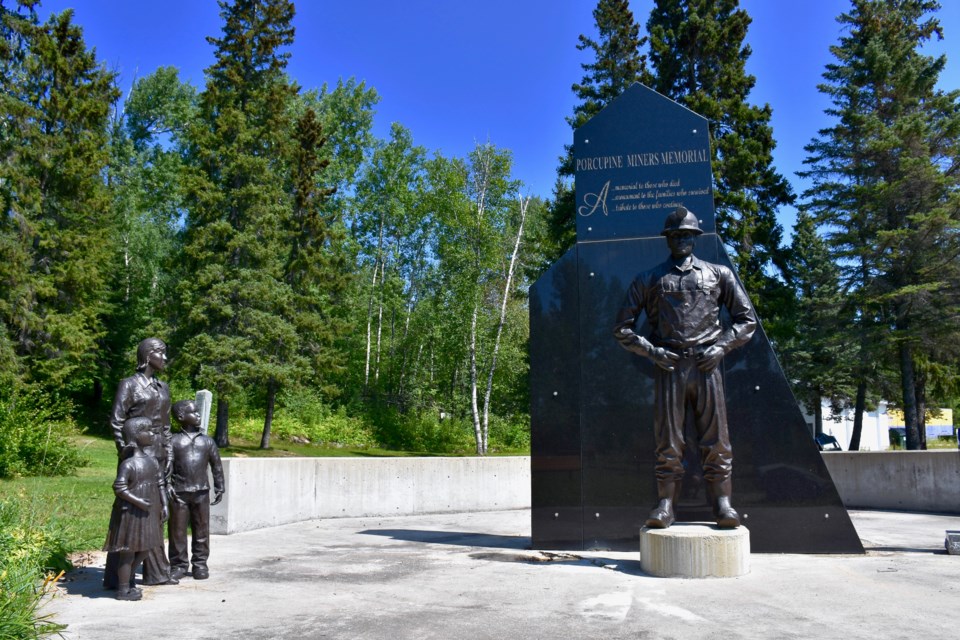April 28 marks the National Day of Mourning, which is dedicated to remembering those who have lost their lives, have been seriously injured, or have developed illness on the job.
Nationally observed since 1984, flags are lowered to half-mast on Parliament Hill and at all government facilities. Communities across Canada have various ceremonies and commemorations. However, with the ongoing concerns of the COVID-19 pandemic, most events will be held online again this year.
“In the past, we would have assembled down by the McIntyre Arena near the miners memorial at 11 o'clock,” said Jean-Paul Desilets, of the Timmins and District Labour Council, an organization established over 70 years ago.
“A lot of the origins of the Day of Mourning come from Ontario. The date April 28, it goes back to 1914 and the passage of the Ontario Worker's Compensation Act (OWCA). The first recognized day was in 1984 in Sudbury. Again, Sudbury being a town with a high density of unionized workers, especially back then, they led it and then it took all the way up to 1991 before an act of parliament said its the National Day of Mourning.”
More than 100 countries now recognize this date as well.
The Timmins and District Labour Council is an umbrella organization that has members from approximately two dozen unions, with workers in sectors such as healthcare, education, retail, and the natural resource industry.
“We have all kinds of members from a variety of unions. Some of them work in the mines, some of them are in public service. There are people who work in prisons. I myself am a teacher. We've got people working at the hospital, not necessarily nurses, but support staff. It's a wide cross-section of members,” said Desilets.
“We promote the greater cause of organized labour.”
He said that day in 1914 was a massive turning point for Canada.
“Prior to OWCA, if you got hurt on the job, you were basically a ward of your own family, and hoping someone would take care of you. That's a prime message of the labour movement, is to say 'no, if you trade your services and go to work, and get injured in the workplace, your employer has a definite obligation to see you through your injury.”
Desilets said his group was firmly behind Bill-148, which was passed in November of 2017. It represented a dramatic increase in government regulation of the workplace.
“It had a lot of progressive things in it in terms of occupational health and safety. It did contain a provision for paid sick days, something that is dearly needed right now,” he said, referring to the complications for many workers across the province relating to the pandemic.
“The Liberal government under Kathleen Wynne brought it in, not to the extent we would have liked, it was only two sick days, but it was a start. It was immediately repealed by Doug Ford, and now in his moment of wisdom, because there's an election coming up, he's looking to put that back into place.”
He is pleased that the push continues to implement paid sick days for Ontario workers.
“That is the kind of thing that the Timmins & District Labour Council definitely endorses on behalf of all working people, not just unionized people.”
He believes that Premier Doug Ford axed sick days to appease the business community, which he feels was a short-sighted approach.
“If you don't take care of workers, you're not going to have consumers. That's what the business community needs to think about. This is all cyclical. We have to take care of one another.”
According to the Canadian Labour Council, approximately 1,000 Canadians are killed each year as a result of workplace injuries, accidents, and illnesses. It's a number Desilets said is alarming and disturbing.
“I think that number might go up a bit, once COVID deaths are accounted for.”
Dangerous and higher-risk jobs continue to be a part of society, however, since the pandemic, there are now several more workplaces considered higher risk, such as grocery retail and trucking.
As an educator, Desilets considers himself fortunate to be working remotely with online learning and feels for those who are on the front lines every day.
“I know a lot of people working in hospitals, and what can you say to them other than good luck?”
Despite no in-person gatherings taking place again this April 28, Desilets encouraged anyone who hasn't seen the mining memorial at McIntyre Park to find the time to visit it and reflect.
“You look at how many names are on that mining memorial, going back earlier in the 20th century, and thankfully the numbers keep going down. But there are names there, people I knew, because they're no longer with us, that are on that memorial. It shows that even though we've gotten a lot better, workplace injuries and deaths haven't been eliminated.”
Andrew Autio is the Local Journalism Initiative reporter for The Daily Press. LJI is a federally-funded program.



